- Call us: 01444 237070
- Contact Us
- Stores
- Sign In / Register
- Black Friday Deals
-
- Back
- Used Cameras
- Used Accessories
- Used Lenses
- Used Video
- Used Film Equipment
- Used Stock Alert
- Used Blank Test
- Sell or Part Exchange
- All Used Black Friday Deals
- Used Clearance
- Recently Added Used Equipment
- Park Picks
- Faulty
- Trade-In
- Blog
- New in
- Call us
- Contact us
- Stores
- Sign in
- Categories
- Tips & Inspiration
- Reviews
- News
- Events
- Features
- Buying Guides
- Competitions
Leica M EV1 First Look Review
Leica has announced the Leica M EV1, which is a landmark camera that takes the M-System to the next level. As the name suggests, this is the first M rangefinder to feature an integrated electronic viewfinder (EVF), which brings a modern mirrorless workflow to a range that’s defined manual photography for more than seven decades.
Leica M EV 1 Video Review | A Step Forward for the M Series?
Our Leica M EV1 first look review will hopefully placate purists, who will be happy to hear that the M EV1 keeps everything that makes the M-Series so unique. Features such as the compact, iconic body design, precision German engineering, and intuitive ergonomics are all still there, while adding a completely new way to compose and focus your images.
It arrives with the same 60 megapixel BSI CMOS full-frame sensor as the M11, along with Leica’s Maestro III processor and a classic style that many photographers admire.
The 5.76 megapixel OLED EVF offers a realistic preview of the frame, with focus peaking, image magnification, and digital zoom for more accurate manual focusing, which are accessible from a new FN-Lever that has been added to the body. Leica has also included built-in Content Authenticity Initiative (CAI) technology, which was first developed for the M-Series. There’s no question that the M EV1 is one of the most advanced digital cameras Leica has ever made.
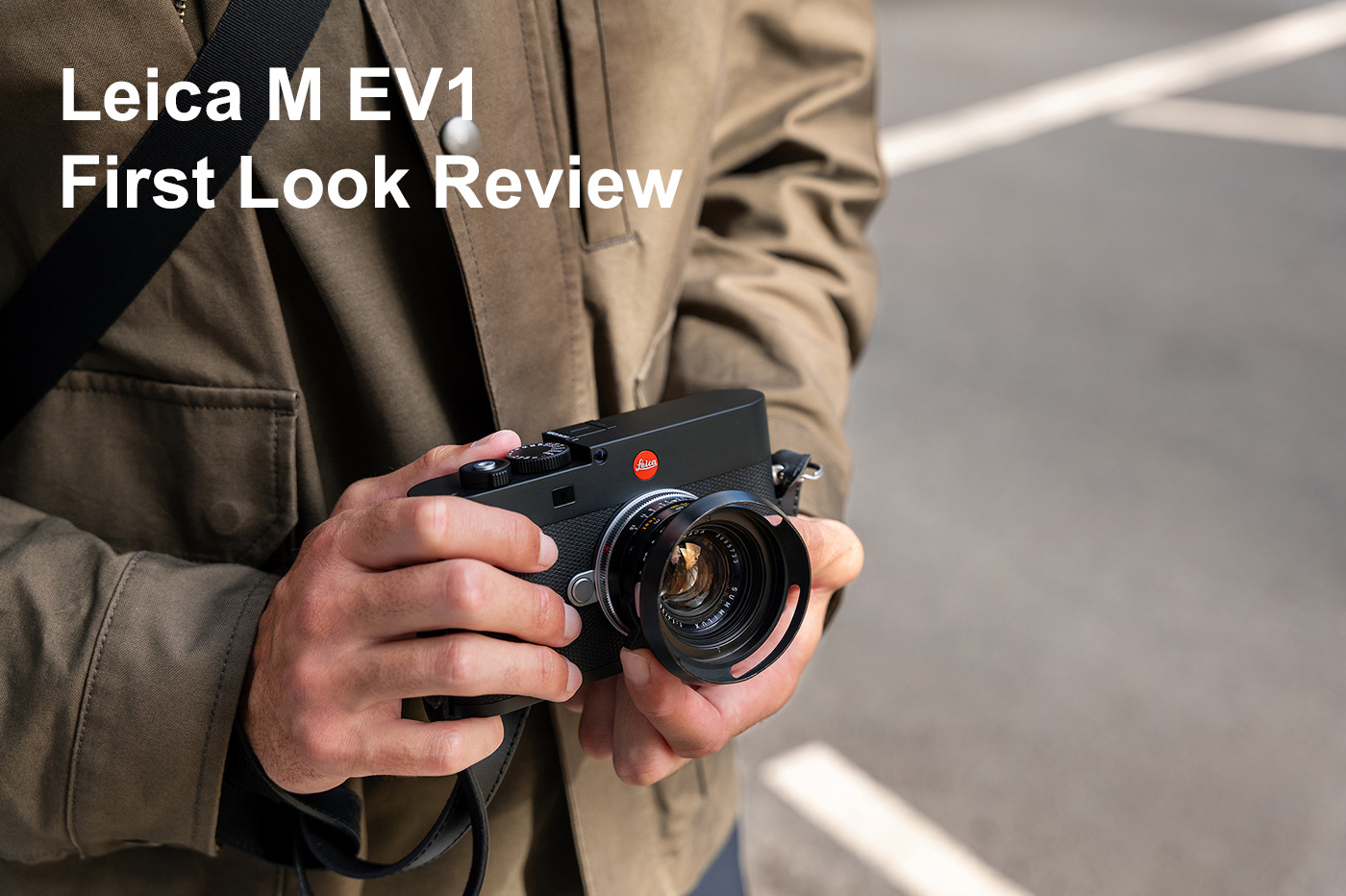
Let’s take a closer look at what this means for Leica users, when it’s available, and how it compares with the M11.
M EV1 Release Date and UK Price
The Leica M EV1 was released October 23rd, 2025 alongside the Leica Handgrip M11 with Diamond Pattern Black. Pricing is £6,840.00 for the camera, and £340.00 for the grip, which makes it one of the more accessible M series rangefinders currently available.
An Ever Evolving M-System
Having recently celebrated 70 years of Leica M, the M EV1 continues with traditions that are central to the M-System, while introducing entirely new features that elevate the shooting experience, with more in keeping with contemporary mirrorless cameras.
It still looks and feels like a classic rangefinder (which is, of course, quite stunning) but has a built-in EVF that provides photographers with real-time feedback and greater accuracy when composing, exposing and focusing.
This makes it especially useful for lenses that don’t match rangefinder frame lines, whether shooting with a wide-angle, telephoto or macro lens, whilst also accurately previewing the exposure and depth of field before taking the shot.
There’s also a newly added FN-Lever, which provides digital zoom for any lens as well as access to focus assist functions. Leica’s familiar manual dials are still available on the body, which is as clean, minimalistic and stylish as ever.
The OLED EVF is naturally extremely high quality, with 5,760,000 dots, 60 fps and a 0.76x magnification. Frame coverage is 100%, with an exit pupil position of 20.75 mm and a setting range of -4/+2 for the dioptre adjustment. Leica has also included an eye sensor for automatic switchover between the viewfinder and LCD panel.
Speaking of the LCD, the body houses a large 2.95-inch Active Matrix TFT made with Gorilla Glass, with 2,332,800 dots and touch control. Leica’s menus are as clear and easy to navigate as ever, providing one of the best user interfaces in any system. Before looking at other features, let’s see what benefits the electronic viewfinder provides.
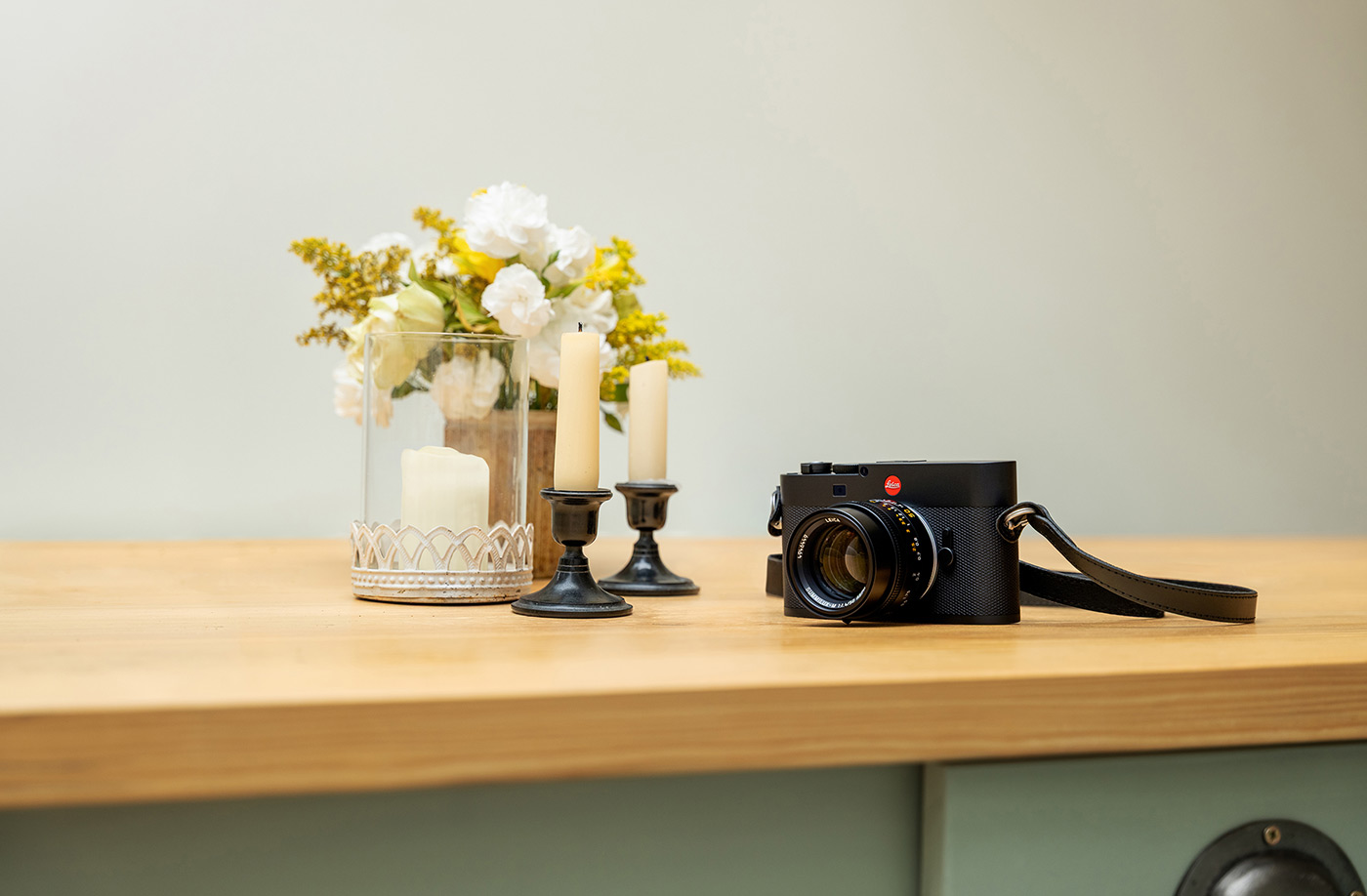
What’s the point of an EVF anyway?
An EVF provides a WYSIWYG (what you see is what you get) shooting experience, allowing you to see exposure, colour, and focus before pressing the shutter. The addition of an EVF aims to make composing and acquiring focus much faster too, while also allowing for shooting information and tools to be overlaid.
The M EV1 has focus peaking, which highlights edges in red or white to highlight when a subject is in focus, while a magnification option helps to confirm critical focus by punching into the scene. These are especially handy when working with Summilux or Noctilux lenses at wide open apertures due to the very fine focal plane.
Live exposure preview also shows closely how brightness and contrast will appear in the final image, so you can check composition, exposure, and focus in one, all without needing to take your eye away from the bright mini OLED screen.
Aside from the new viewfinder and function lever, how is the rest of the handling? Let’s explore that next.
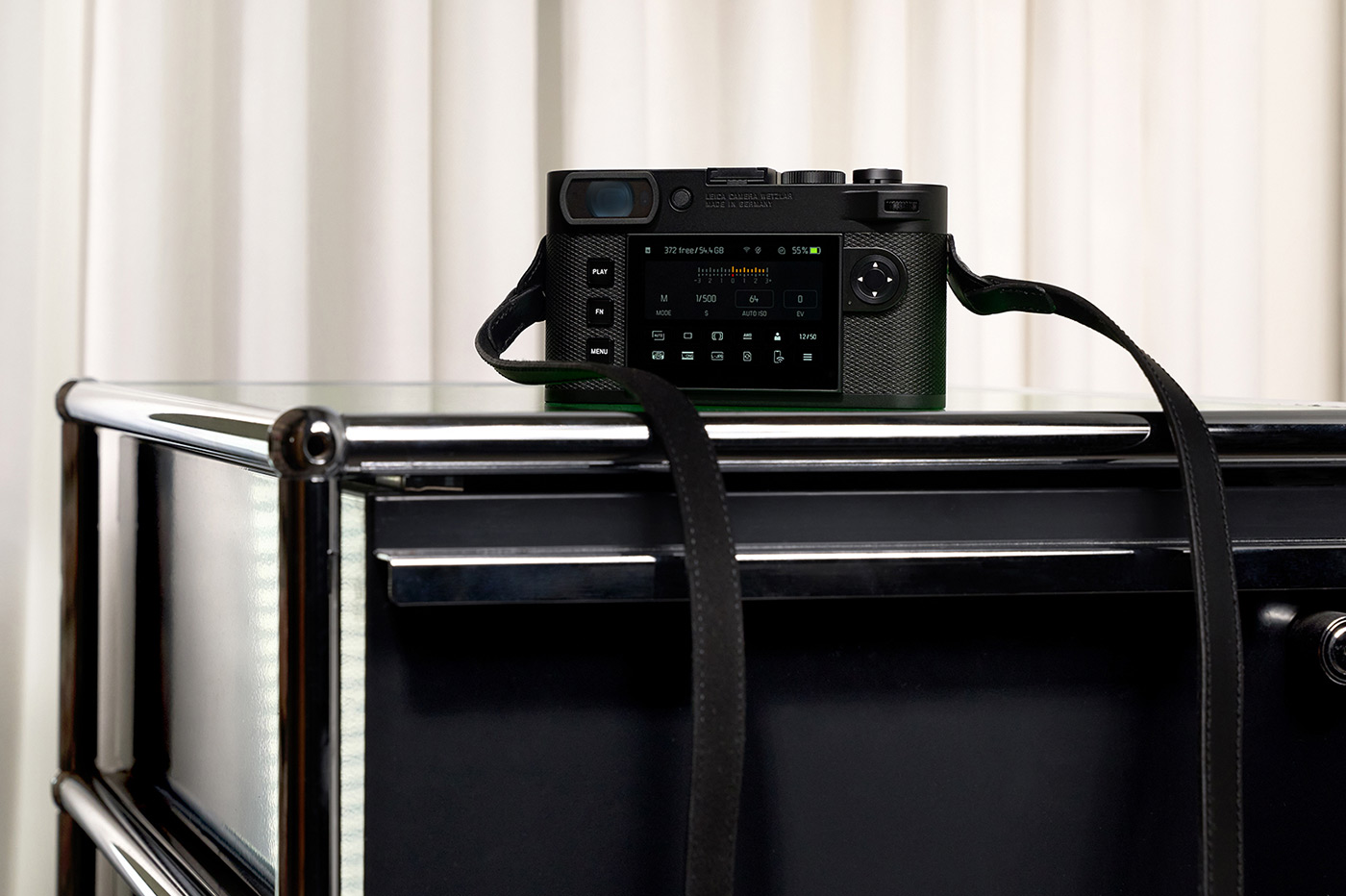
Design and Handling
The M EV1 is compact and solid, with a metal housing that combines magnesium alloy with a diamond-patterned leatherette finish and Leica’s signature red dot logo. This design is every bit as iconic as expected from the M-Series, with robust dials and a positive shutter release that will impress seasoned aficionados as much as newcomers.
The ‘Made in Germany’ build quality is also what you’d expect, being hand-assembled in Wetzlar, and offers the kind of durability that is hard to match. Although the body design is familiar, the handful of physical additions make a big difference to usability, and potentially for the M-Series going forwards.
The new FN-Lever sits just beside the lens mount, giving quick access to focus aids and digital zoom, while the rest of the controls remain understated and intuitive along the top and rear panels.
At around 139 x 80 x 60mm and 484g with the battery installed, the body is similar to the M11, though slightly lighter. Menus are really easy to navigate, with clear typography and well-organised screens, continuing Leica’s approach of function first, design second. For those who prefer a beefier grip, an optional Handgrip M11 with Diamond Pattern Black adds support with the same stylish finish. It attaches without tools, is ARCA-SWISS compatible, and provides continued access to the battery and ports, which is all rather useful.
Next, let’s look at how this updated M performs when it comes to image quality and everyday shooting.
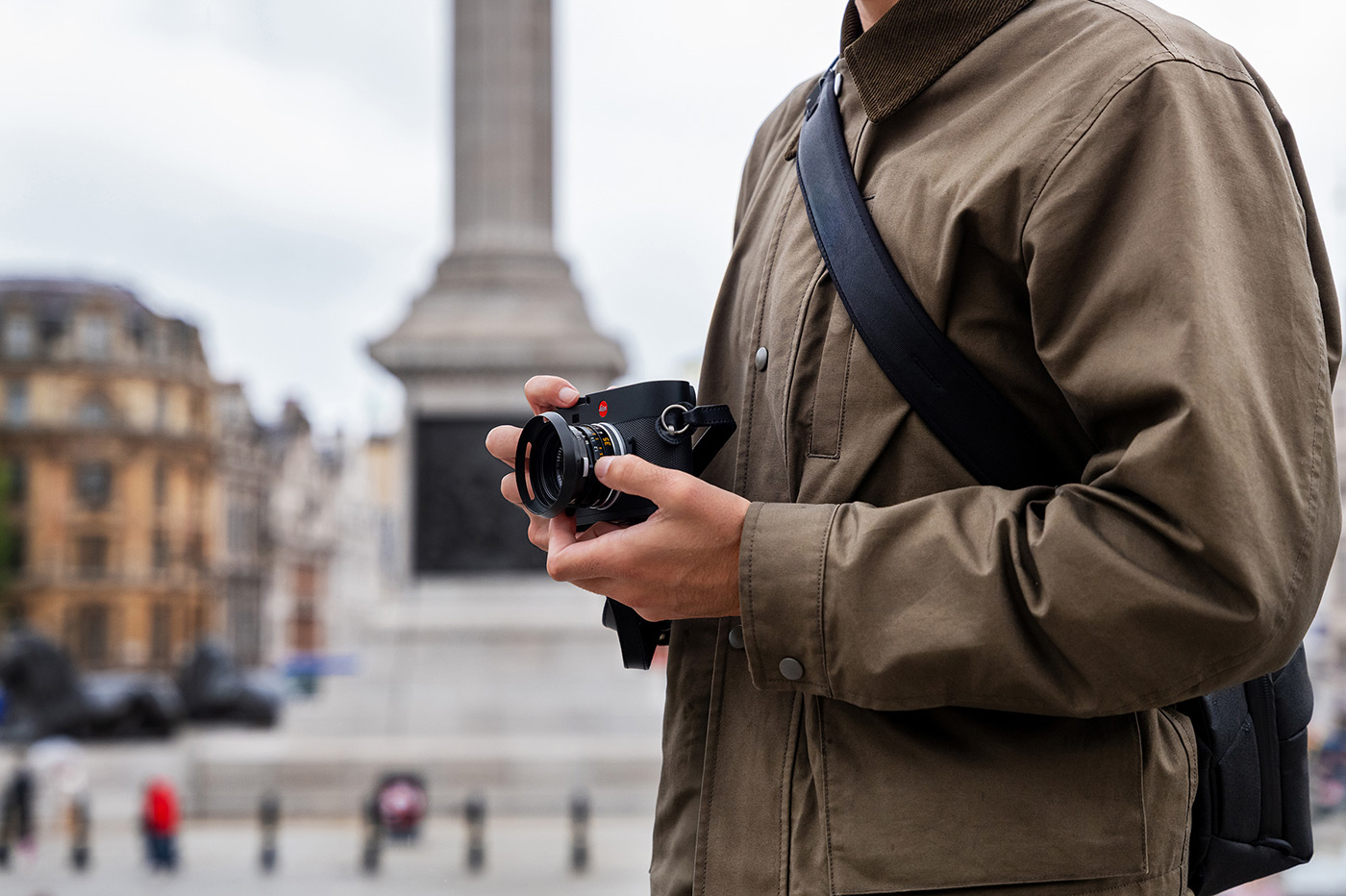
Image quality
The camera houses the same 60.3 megapixel BSI CMOS full-frame sensor with Triple Resolution Technology that was first introduced with the Leica M11 and is still one of the most advanced full-frame sensors ever produced. It has a pixel pitch of 3.76μm, which helps it resolve extraordinary detail while rendering smooth tonal gradation.
You can record images in DNG or JPEG at three selectable resolutions; 60, 36, or 18 megapixels, with each using the entire sensor area, so there’s no digital crop regardless of image size.
With up to 15 stops, dynamic range is impressive too, on par with the Leica SL3 and ahead of many models in this class. The camera also features a native ISO of 64 to 50,000 with clean results and handheld shooting possible in all sorts of lighting conditions.
The Maestro III processor contributes to image quality as much as usability, writing data to the internal 64 GB memory or to an optional SD card, with UHS-II cards up to 2 TB supported. While this isn’t a high-speed sports camera of course, the 4.5 fps burst rate is enough for burst shooting during street photography, reportage and capturing similar subjects. File sizes vary from around 70 MB for a DNG to roughly 20 MB for medium-resolution JPEGs, which provides the option for highest image quality or file size flexibility.
The absence of a low-pass filter keeps details razor-sharp, and makes the most of the optical quality from M lenses. When paired with a Summicron or APO-Summilux, the level of clarity across the frame is exceptional, and edge-to-edge sharpness remains consistent even at wide apertures.
Next, let’s see how connectivity, workflow and modern digital tools round off the experience.
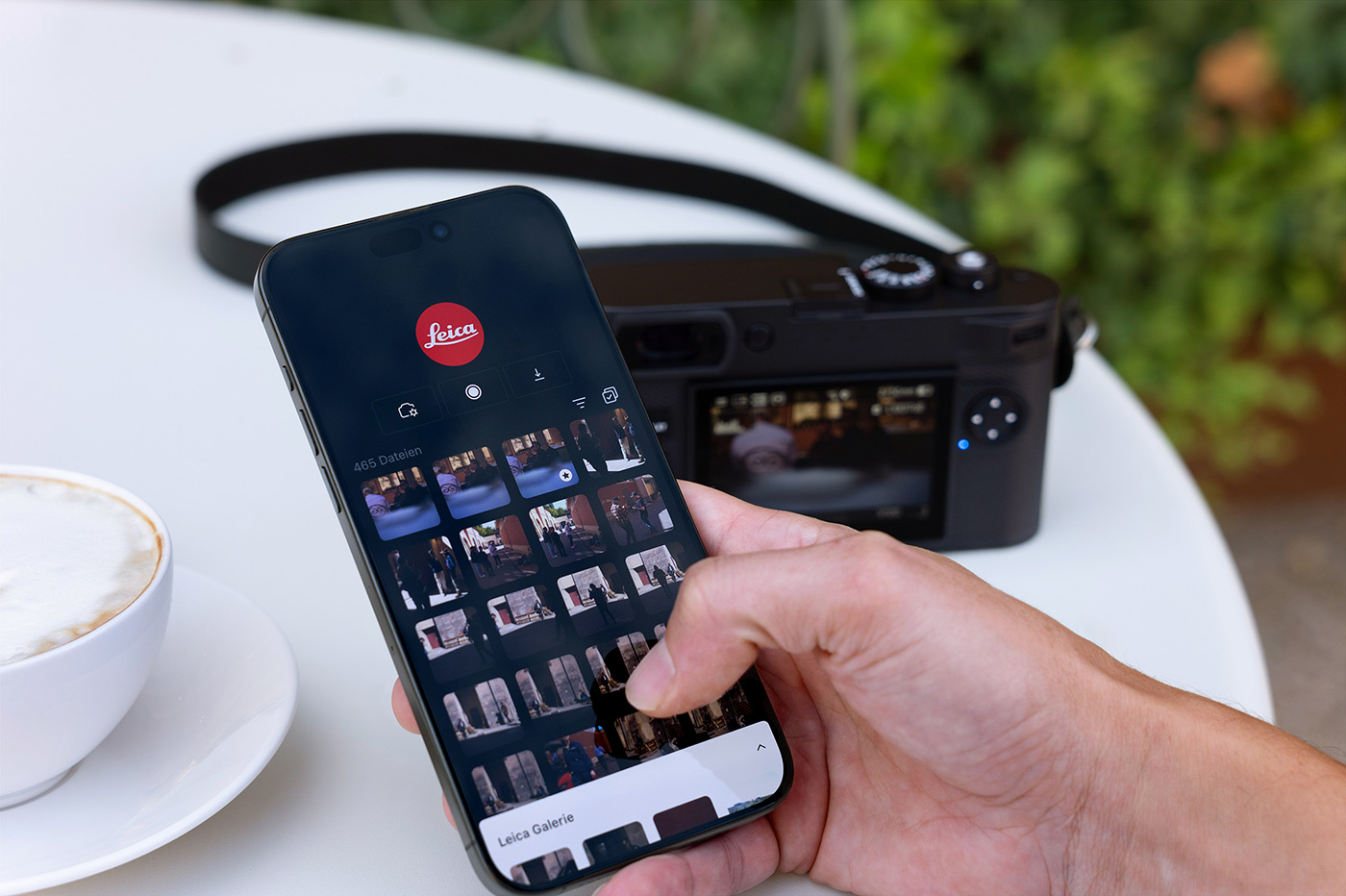
Connectivity
Despite sporting a rangefinder design, the M EV1 caters to any modern photographer’s workflow. Leica has made sure that the camera will transfer, back up, and verify images quickly whether in the studio or on location, thanks to several wireless connections.
These include dual-band Wi-Fi (2.4GHz and 5GHz) supporting IEEE 802.11 a/b/g/n/ac, and Bluetooth 5.0 LE, which enables the camera to pair with the Leica FOTOS app for background image transfer and remote control. Geotagging is also available and handled automatically through the app using the connected device’s GPS data.
For wired setups, there’s a USB-C (USB 3.1 Gen 1) port that supports both charging and data transfer, so you can tether directly to a computer via software like Capture One Pro For Every Camera, which has supported Leica cameras for some years now.
Key connectivity highlights include:
- Dual-band Wi-Fi (2.4GHz and 5GHz)
- Bluetooth 5.0 LE
- USB-C 3.1 Gen 1 for charging, data transfer, and tethered shooting
- Geotagging support via Leica FOTOS app
- 64GB internal storage with SD/SDXC card expansion up to 2TB
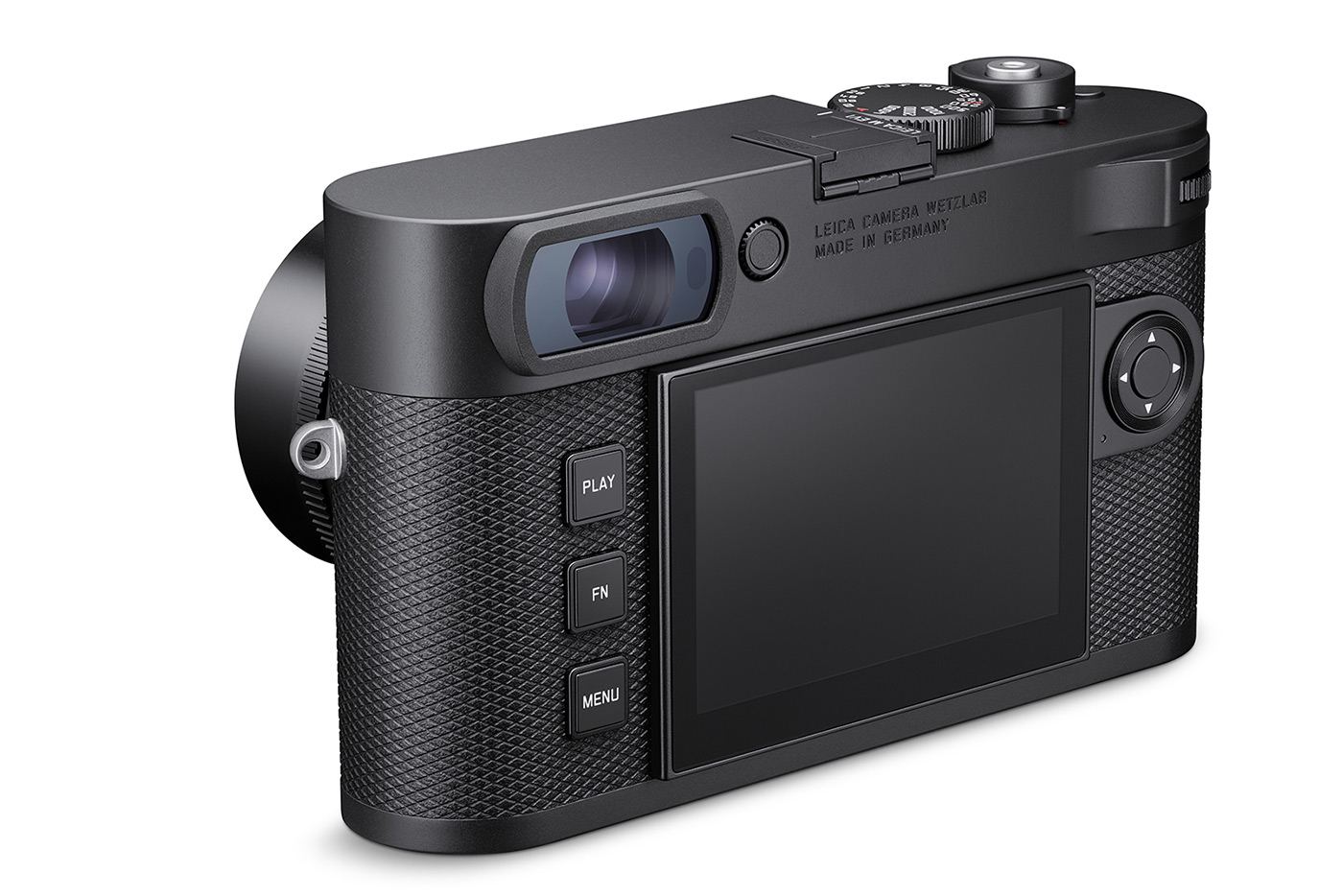
Battery Life and Storage
Power comes from a BP-SCL7 rechargeable battery, which is rated at 7.4V, 1800mAh, and provides around 244 shots per charge (CIPA standard). This varies depending on whether you use the EVF or LCD, with the viewfinder drawing slightly more power. Recharging can be done through the supplied Leica BC-SCL7 charger or via the included USB-C cable.
Images are written to either the 64GB internal memory or an optional SD/SDHC/SDXC card (UHS-II recommended, up to 2TB supported). The internal memory is very welcome and a feature we hope to see more frequently.
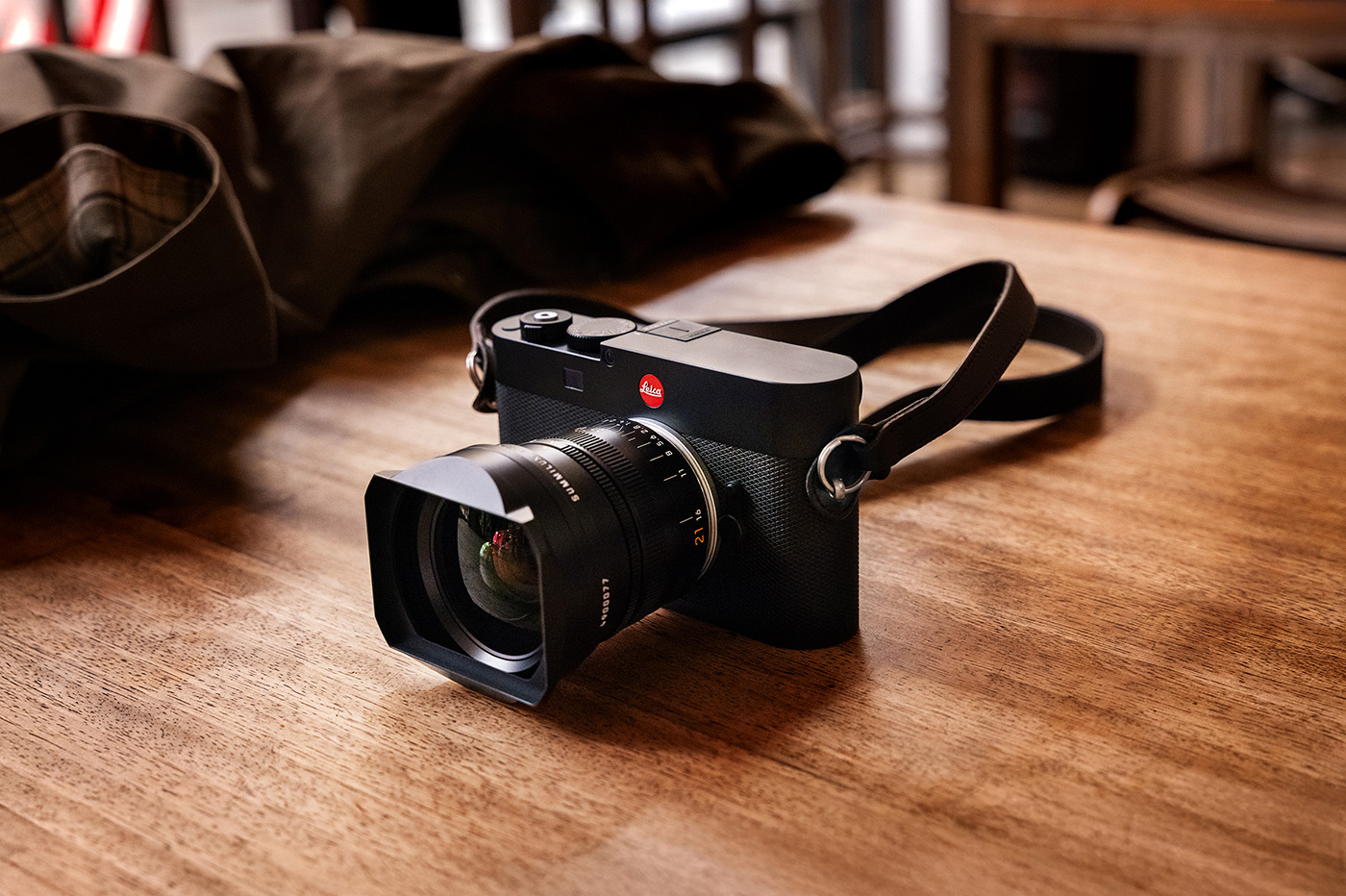
Content Authenticity
Leica’s implementation of CAI (Content Authenticity Initiative) is a real benefit to the M-System. Every image captured includes secure verifiable metadata, such as camera details, lens information, and timestamps, which can be checked via contentcredentials.org/verify.
This is particularly important for photojournalists, and professionals who need to prove the authenticity of their work, and we have no doubt image integrity will become ever more important in this new era of AI-generated imagery.
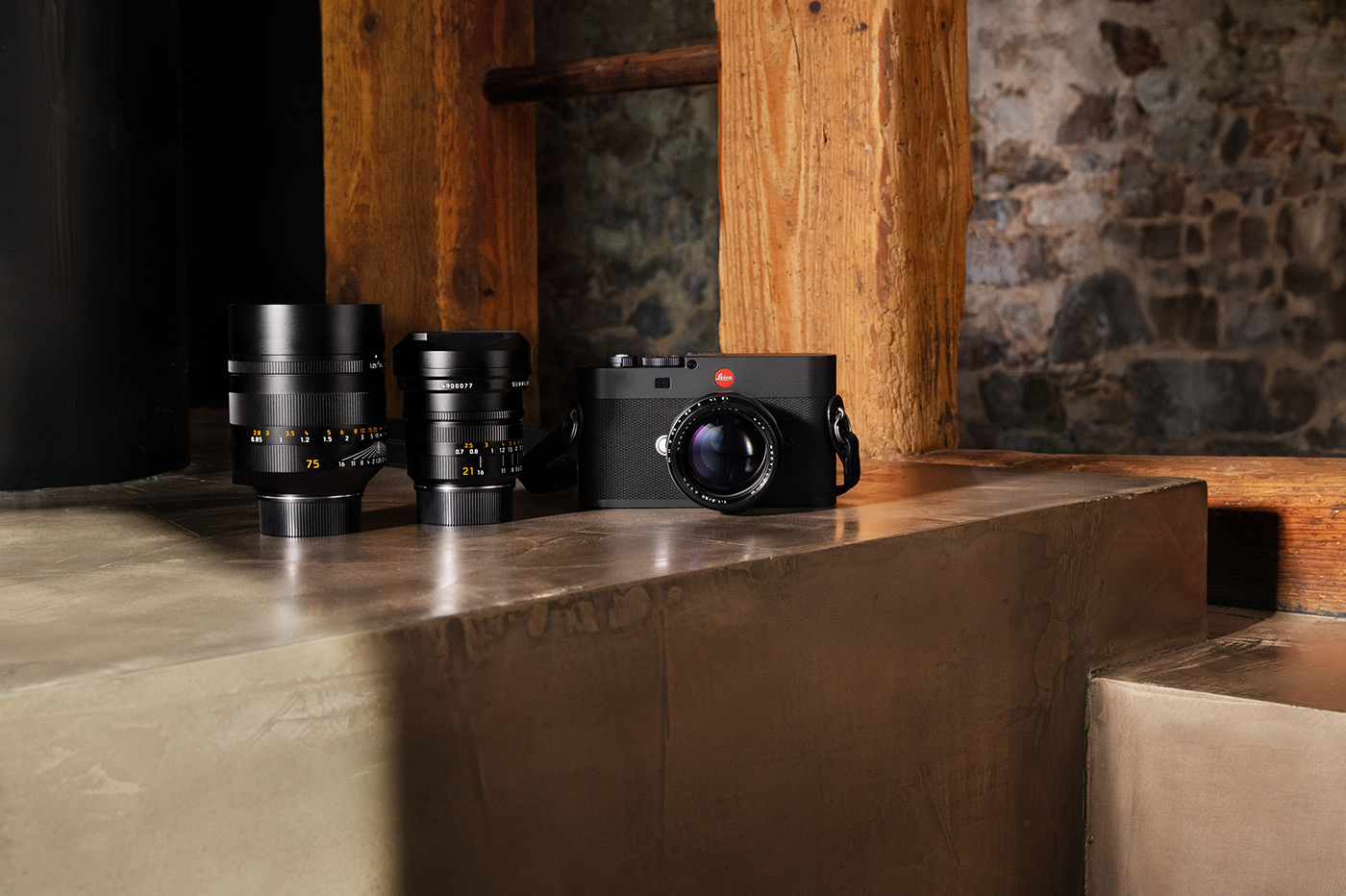
M Mount Lenses
One of the advantages of the M EV1 and broader M series is lens compatibility with every Leica M lens made since 1954. That includes classic film optics and the latest APO models, each of which brings their own distinct character.
Several lenses stand out for this body, such as:
- Leica Summilux-M 35mm f/1.4 ASPH, which is a versatile everyday lens that resolves impressive corner-to-corner detail, with smooth background separation when shooting wide open.
- Leica Noctilux-M 50mm f/0.95 ASPH For the very well healed this is one of the most recognisable Leica lenses, which will now be easier to focus than ever thanks to the EVF’s peaking and magnification tools.
- Leica APO-Summicron-M 90mm f/2 ASPH This short telephoto benefits from real-time composition and the EVF’s 100% frame coverage, which really is ideal for portraits and shoots where focus accuracy is critical.
- Leica Tri-Elmar-M 16-18-21mm f/4 ASPH This compact wide-angle zoom lens shows how the M EV1 makes ultra-wide shooting simpler, with live exposure and perspective preview that you don’t get with optical frame lines.
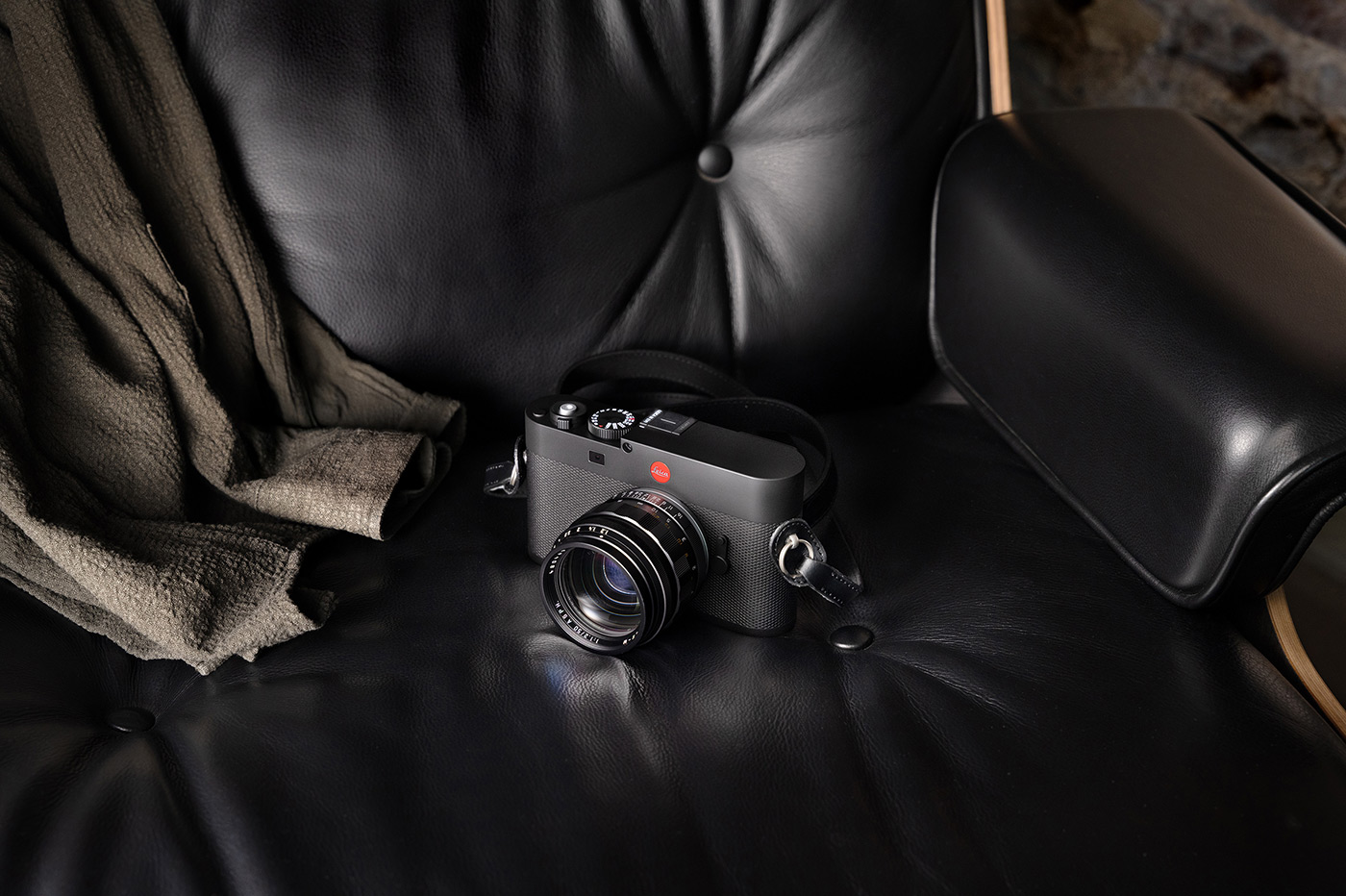
Who Is the M EV1 Camera For?
The M EV1 is for discerning photographers who are drawn to the traditional feel of an M rangefinder but want the benefits of a mirrorless camera, with the ability to expose, check colour and focus in real time by using focus assist tools
It’s a great choice for both new and existing Leica owners who capture subjects such as street photography, portraits, documentary or travel, and want CAI technology, internal storage and incredible image quality from a modern Leica.
Shop for the Leica M EV1 Camera today and discover where the new direction for the M System takes your creativity.
If you are thinking about upgrading from a previous M camera or other equipment, you can request a fast and free trade-in quote to offset your existing gear and begin the next chapter with an M EV1.
Share this post:
By Nick Dautlich on 23/10/2025
Nick Dautlich
Senior Content Writer and Product Reviewer
Nick Dautlich is the Senior Content Writer and Product Reviewer at Park Cameras, with over 15 years of photography experience. A Sony Imaging Professional and expert reviewer, Nick has worked with major brands such as Canon, Sony and Nikon. His work is also featured on Vanguard World UK’s website, Capture Landscapes, and Shutter Evolve. Nick’s photography includes National Trust projects and magazine covers and he is passionate about landscapes and storytelling. Nick also enjoys hiking and teaching his children about nature. Learn more on his profile page.
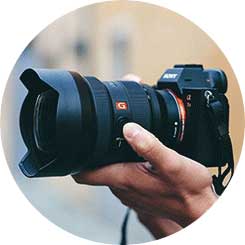
Trade in your old equipment
Fast and easy trade in service ensures your old gear is collected efficiently and you are paid quickly! It's very simple to trade in your unwanted photography gear. Just head over to our dedicated Sell or Part Exchange page, fill out the details, and we'll get back to you with an offer for your old gear. Take the cash, or put it towards the cost of your new gear. It's up to you! Find out more
sign up to the newsletter
Keep up to date on the latest photography news, events and offers. Sign up now